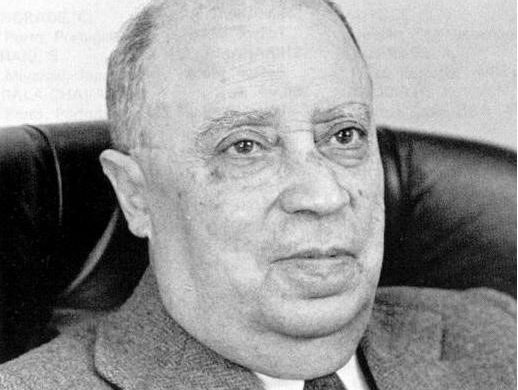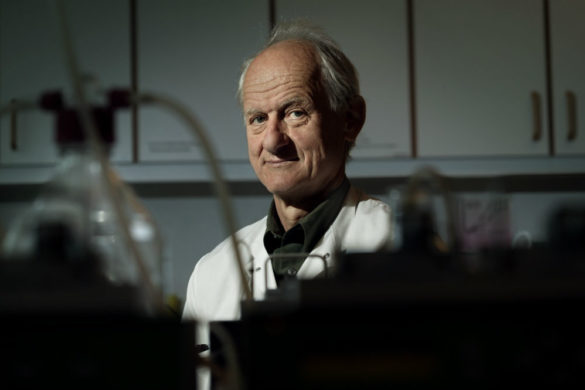As every year, spring time is high season for preparing for the annual congress - this year the 4th congress of the European Academy of Neurology in Lisbon. It is the annual main event of our Society and we expect around 6000 participants in this special and historically attractive Portuguese capital. The congress has continuously adapted its profile and one of the main goals of our Society is to continuously develop new formats which satisfy the requests of modern neurology and its drivers, the European Neurologists. Our program committee under the leadership of Prof. Boon has excellently realized this request with many new innovations.
Category
Featured Slider
-
-
Paper of the MonthEAN NewsTop ArticlesFeatured Slider
Paper of the month: Slowing disability progression in secondary progressive multiple sclerosis with siponimod
May 1, 2018For May 2018, we have selected: Kappos L, Bar-Or A, Cree BAC, et al., for the EXPAND Clinical Investigators. Siponimod versus placebo in secondary progressive multiple sclerosis (EXPAND): a double-blind, randomized, phase 3 study. Lancet Neurol 2018;391:1263-1273. Secondary progressive multiple sclerosis (SPMS) is characterized by a previous history of relapsing remitting MS (RRMS) and the continuous progression of disability over the years typically without relapses. -
Portugal is a country with a 900-year history: many remnants of past colonization by Celtics, Romans, and Arabians are still present. Unquestionably, the greater contribution of Portugal to the humanity have been the overseas navigations around the world, namely the discovery of the maritime way to India, the discovery of Brazil and of several Atlantic islands.
-
Executive PageEAN NewsFeatured Slider
President’s page: Educational activities of the European Academy of Neurology outside the annual congress
April 3, 2018Education is one of the key elements of the activities of the European Academy of Neurology. While the congress is well known to most of our members and European Neurologists the activities outside the congress are much less known. EAN has a special committee working on education[1] with Prof. Hannah Cock as the chair and the teaching course subcommittee under the leadership of Prof. Claudia Sommer. They are charged to develop an educational program including education for neurologists in training and advanced courses with the emphasis on training for the general neurologist. While the field of Neurology is getting increasingly broader it is of paramount importance to set a common ground for all neurologists which our education committee has carefully developed. For the congress educational programme, a five-year curriculum of the educational content covering all relevant topics has been developed over the past 3 years and parts of this plan are also applied to the educational activities outside the congress. -
Paper of the MonthEAN NewsFeatured Slider
Paper of the month: Structural brain abnormalities as signatures in epilepsy
April 1, 2018For April 2018, we have selected: Whelan CD, Altmann A, Botia JA, et al., for the ENIGMA-Epilepsy Working Group. Structural brain abnormalities in the common epilepsies assessed in a worldwide ENIGMA study. Brain 2018;141:391-408. Epilepsy affects 0.6-1.5% of the population worldwide with one-third of patients being resistant to antiepileptic treatment. Nowadays epilepsy is considered a network disorder in which several structural changes are involved. -
EAN NewsCountry of the MonthTop ArticlesFeatured Slider
Country of the month – Slovakia
April 1, 2018Slovakia, officially the Slovak Republic, is a country in Central Europe. The total area of the Slovak territory is 49 036 km2 and is mostly mountainous. The population is over 5 million. The capital and largest city is Bratislava. However, the Slovak Republic is a young state (established on January 1st, 1993, by the split of Czechoslovakia), indeed it is an old country with rich historical heritage. -
The Republic of Lithuania is a state in northern-eastern Europe occupying 65.300 km2 area with Vilnius city as capital and a population of 2.979.000 inhabitants. Neighbors of Lithuania are Latvia, Belarus, Poland, and Russia. It is a parliamentary democracy, with… Continue Reading
-
Paper of the MonthFeatured Slider
Paper of the month: No benefit from solanezumab in Alzheimer disease
March 1, 2018by Elena Moro For March 2018, we have selected: Honig LS, Vellas B, Woodward M, et al. Trial of solanezumab for mild dementia due to Alzheimer’s disease. N Engl J Med 2018;378:321-330. Alzheimer’s disease (AD) pathology can be related to either excessive production or reduced elimination of beta amyloid (Aβ), which eventually results in oligomers, fibrils, and neuritic Aβ plaques. -
EAN Congress newsEAN NewsFeatured Slider
Neurological news from Portugal III – Corina de Andrade and Paramyloidosis
March 1, 2018Prof. Corino de Andrade graduated at Lisbon Medical School, Hospital of St Martha, in 1929. He began his practice at the main hospital in Lisbon (Hospital S. José) and kept visiting his Alma Mater with a serious commitment to practice neurology at the department of Egas Moniz, the only one in Portugal. This passion was soon rewarded with the residency in neurology. -
Executive PageEAN NewsFeatured Slider
President’s page: Rare diseases: a rapidly progressing field of neurology
February 1, 2018Neurological diseases have a very different frequency. Neurological practice and brain research need to have this in mind. The global burden of disease study has shown that neurologic diseases are the leading cause group of disability-adjusted life years (DALYs) of all medical disease groups in 2015 with 10.2% of global DALYs. Table 1 shows the age-standardized rates of DALYs, deaths and the prevalence of the different neurologic diseases.1 In this schematic rare neurological diseases are mostly covered within the category ‘other neurological diseases’. The prevalence cannot be estimated based on the available data. However, the number of existing rare neurological diseases is very large. The current website of the NIH lists 1244 neurologic rare diseases which is the largest number among all rare disease groups and covers approximately 60% of rare diseases.2 These more than 1200 diseases produce more than 0.9% of the neurological DALYs world-wide which seems at first glance to be relatively small. -
Paper of the MonthEAN NewsFeatured Slider
Paper of the month: Implementing early ALS diagnosis
February 1, 2018For February 2018, we have selected: Feneberg E, Oeckl P, Steinacker P, et al. Multicenter evaluation of neurofilaments in early symptom onset amyotrophic lateral sclerosis. Neurology 2018;90:e22-30. doi:10.1212/WNL.0000000000004761. Amyotrophic lateral sclerosis (ALS) is a devastating neurological disorder affecting motor neurons. The course of the disease is progressive with life span of 3 to 5 years from the onset of the symptoms. -
Kyrgyzstan is a Central Asia country of incredible natural beauty and proud nomadic traditions, landlocked and extremely mountainous with almost 90% of its territory being 1500 m above sea level. Its capital and largest city is Bishkek.
-
EAN Congress newsFeatured Slider
Neurological news from Portugal I – the land of the 4th EAN Congress – Egas Moniz and Angiography
January 9, 2018by Prof. Victor Oliveira, University of Lisboa, Portugal – Member of the Local Organising Committee for the 4th EAN Congress in Lisbon, Portugal Egas Moniz (1874-1955) was a Portuguese neurologist whose name is associated to the invention of angiography and… Continue Reading -
Paper of the MonthFeatured Slider
Paper of the month: A landmark in gene therapy from type 1 SMA
January 9, 2018For January 2018, we have selected: Mendell JR, Al-Zaidy S, Shell R, et al. Single-dose gene-replacement therapy for spinal muscular atrophy. NEJM 2017;377:1713-1722. Spinal muscular atrophy (SMA) is caused by loss or dysfunction of the gene encoding survival motor neuron 1 protein (SMN1). Disease severity is also influenced by a second gene, SMN2, which can produce smaller amounts of this protein. -
David B. Vodušek (DBV): When looking back at your long and varied career, can you tell us what was crucial for you to choose neurology as your specialty, and headache as your primary research field of interest? Jes Olesen (JO): Already as a medical student, I was interested in neurology. I thought at that time – and I still think so today – that the brain is by far the most interesting organ in a human being.









